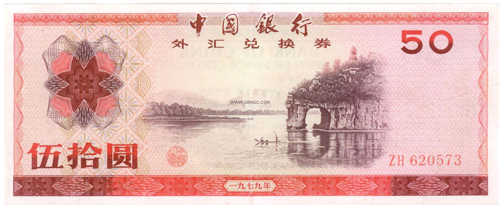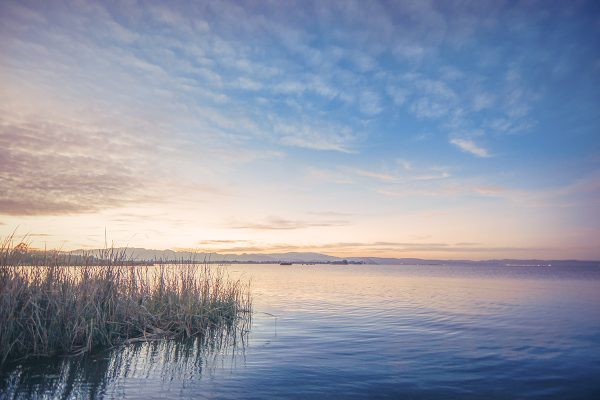
With a nickname like the “Sparkling Pearl Embedded in the Highland”, you know that Dianchi Lake has a serious reputation to live up to. It is a freshwater fault lake nestled at the foot of the mountains just south of Kunming and stands at an impressive 1,886 metres (6,189 ft.) above sea level. It covers a total area of just under 300 square kilometres (115 sq. mi), making it nearly as large as the entire country of Malta and ranking it as the eighth largest lake in China. It stretches 39 kilometres (24 mi) from north to south and 13 kilometres (8 mi) from east to west, with an average depth of 4.4 metres (14 ft.). So, unless you’re a professional basketball player or an Olympic swimmer, we strongly recommend you stick to a boat when navigating this watery behemoth!
Its natural banks have been formed by mountains and four hills rise in each direction, giving the lake a truly picturesque appearance. There’s the Jinma or Golden Horse Hill in the east, the Biji or Jade Rooster Hill in the west, the Baihe or White Crane Hill in the south, and the Sheshan or Snake Hill in the north. The mystical names and ethereal quality of these hills give the lake the appearance of an otherworldly paradise, particularly when you catch sight of the stunning scenery reflected in its waters.
Unfortunately, pollution has rendered the lake water undrinkable and it is currently ranked at Grade V, the lowest water purification level, meaning it is unfit for agricultural or industrial use. Though this pollution has caused the lake’s fish population to wane, fishermen still ply their trade on these crystal clear waters in much the same way as their ancestors did over one hundred years ago and it is still possible to swim in designated parts of the lake.
The history of the lake is delicately intertwined with the history of Yunnan itself. Throughout the Yuan (1271-1368) and early Ming (1368-1644) dynasties, the alluvial plain at the north of the lake was extensively irrigated to provide farmland for locals. However, evidence suggests that the lake may have been settled by farmers as early as the 2nd century BC! It was once the capital of the Dian Kingdom (500-109 BC), an independent state that eventually became part of the Han Dynasty (206 BC–220 AD), and was also subsequently the centre of the Nanzhao (738-902) and Dali (937-1253) Kingdoms. With such a regal background, it’s no wonder people regard Dianchi as a pearl in the Yunnan countryside.
Along the lake, you’ll find a number of attractions that are sure to delight you. Daguan Park is bursting with beautiful rock gardens, elegant pavilions and sturdy bridges, with the Daguan Pavilion at its centre. The pavilion was built in 1828 and has one of the most famous Qing Dynasty (1644-1912) couplets engraved upon it. This couplet is 180 characters long and is thus one of the longest couplets in Chinese history, brimming with poetic grace and imbued with historical significance.
The White Fish Park on the west bank of the lake is so named for a small hill, which looks like a white fish opening its mouth. This park is characterised by its verdant gardens and is particularly beautiful during spring, when the cherry blossoms are in full bloom and the crisp white sails of fishing boats can be seen far off in the distance.
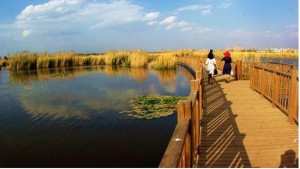 At Haigeng Bank, Dianchi’s south bank, visitors can walk among the slender willow trees gently billowing in the breeze and take advantage of the natural swimming pool that is set up there during summer. Nearby you’ll find the Yunnan Folk Customs Village, where tourists can learn more about the resident Bai, Yi, and Dai ethnic minorities. With all of these wonderful attractions on offer, Dianchi Lake isn’t just any lake; it’s practically a theme park!
At Haigeng Bank, Dianchi’s south bank, visitors can walk among the slender willow trees gently billowing in the breeze and take advantage of the natural swimming pool that is set up there during summer. Nearby you’ll find the Yunnan Folk Customs Village, where tourists can learn more about the resident Bai, Yi, and Dai ethnic minorities. With all of these wonderful attractions on offer, Dianchi Lake isn’t just any lake; it’s practically a theme park!
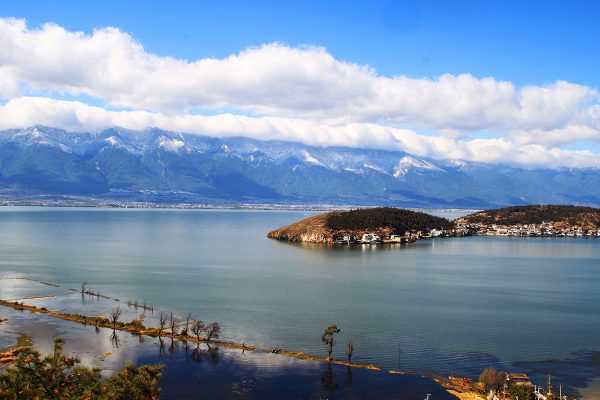
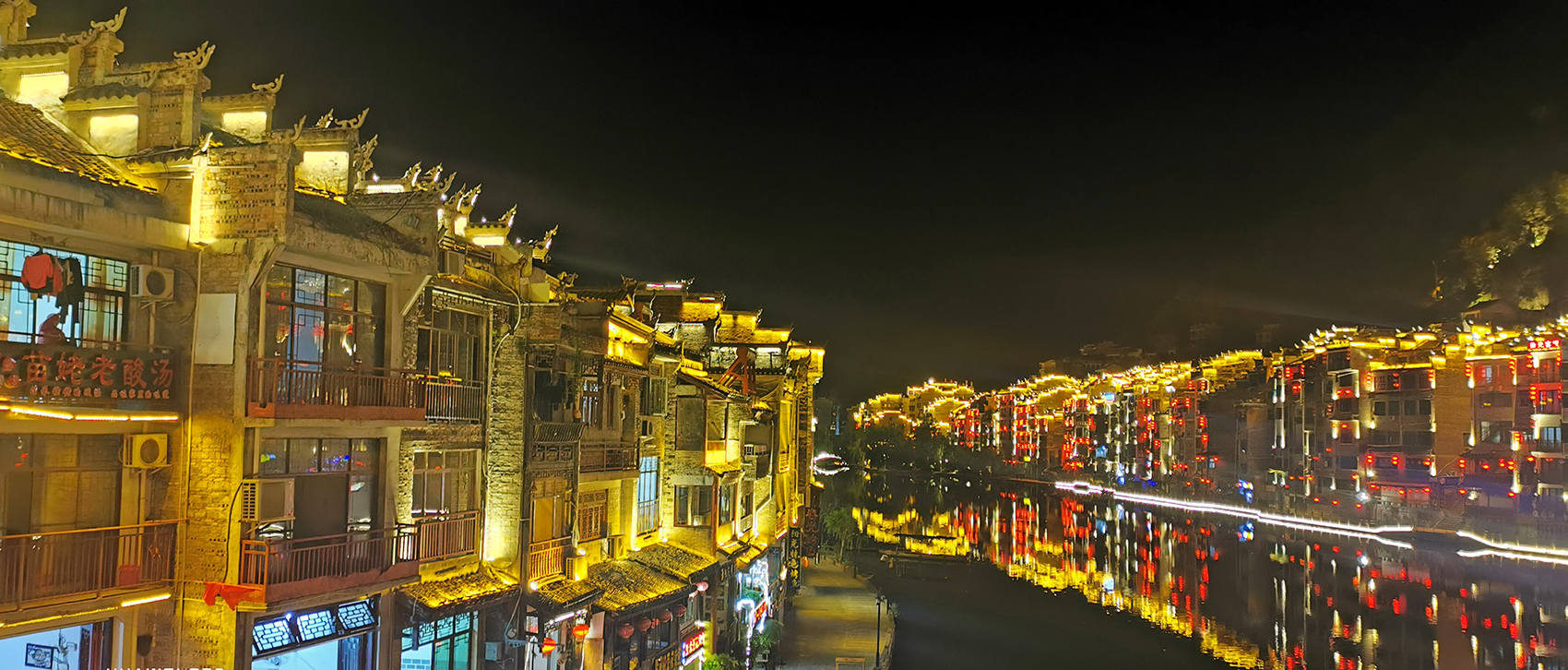
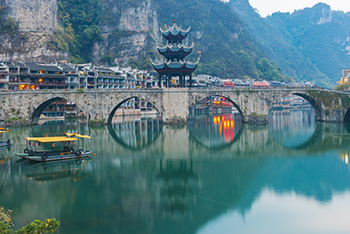 The Wuyang Three Gorges are the most magnificent section of this scenic area. This is a 35-kilometre waterway that is made up of the Dragon King Gorge, the East Gorge and the West Gorge. Amongst these three gorges you’ll find powerful waterfalls crashing into the river, mysterious caves, the gentle gurgling of springs and the jagged figures of rocks emerging from the karst mountainsides. It is truly breath-taking to witness and we strongly recommend you take advantage of one of the local cruises in order to make the most of this scenic spot. It is said to be as spectacular as the Yangtze River Three Gorges and as mystical as the Li River in Guilin.
The Wuyang Three Gorges are the most magnificent section of this scenic area. This is a 35-kilometre waterway that is made up of the Dragon King Gorge, the East Gorge and the West Gorge. Amongst these three gorges you’ll find powerful waterfalls crashing into the river, mysterious caves, the gentle gurgling of springs and the jagged figures of rocks emerging from the karst mountainsides. It is truly breath-taking to witness and we strongly recommend you take advantage of one of the local cruises in order to make the most of this scenic spot. It is said to be as spectacular as the Yangtze River Three Gorges and as mystical as the Li River in Guilin.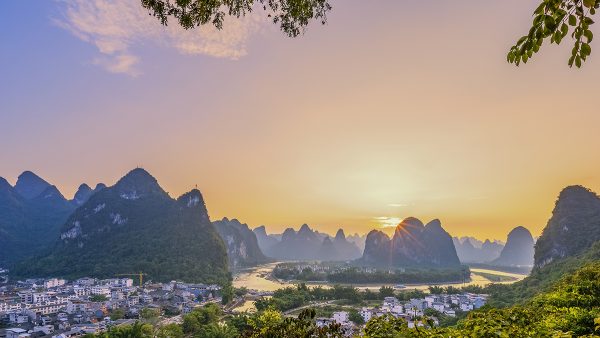
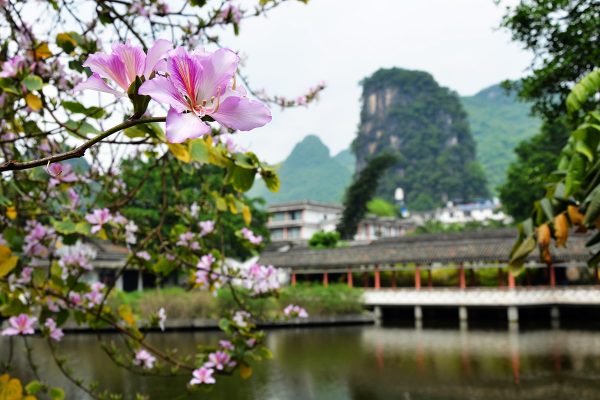
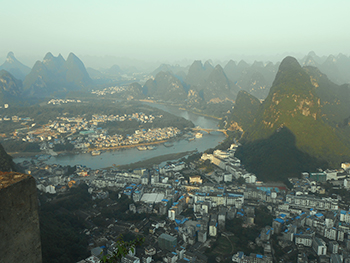 Thanks to the Western expats now living in Yangshuo, the town boasts a variety of Western-style restaurants, cafés and bars that you won’t find in other Chinese towns. The food on offer in most of these restaurants is of a good standard and can provide a much needed rest from Chinese food if you’ve been travelling around the country for too long. Although most places close around 2am, Yangshuo boasts some of the most exciting nightlife in Guangxi. Many hostels will have their own bars and, coupled with the established bars and nightclubs in the town, this makes for a lively and unique atmosphere in the evenings. These hostel bars provide a wonderful opportunity to meet other travellers and backpackers on your journey.
Thanks to the Western expats now living in Yangshuo, the town boasts a variety of Western-style restaurants, cafés and bars that you won’t find in other Chinese towns. The food on offer in most of these restaurants is of a good standard and can provide a much needed rest from Chinese food if you’ve been travelling around the country for too long. Although most places close around 2am, Yangshuo boasts some of the most exciting nightlife in Guangxi. Many hostels will have their own bars and, coupled with the established bars and nightclubs in the town, this makes for a lively and unique atmosphere in the evenings. These hostel bars provide a wonderful opportunity to meet other travellers and backpackers on your journey.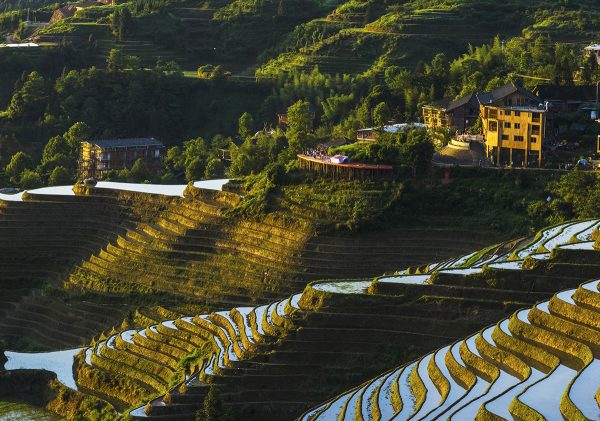 Although rice terraces wind their way around mountains throughout China, the Longji Rice Terraces are considered to be the most magnificent of them all. They are located in Longsheng County, about 100 kilometres (62 miles) outside of Guilin, and are sometimes referred to as the Longsheng Rice Terraces. The word “longji” means “dragon’s backbone” and these rice terraces earned their unusual name because the terraced fields climbing up the mountain look like dragons’ scales whilst the summit of the mountain range resembles a dragon’s backbone. This gives you an idea as to the sheer scale of these rice terraces.
Although rice terraces wind their way around mountains throughout China, the Longji Rice Terraces are considered to be the most magnificent of them all. They are located in Longsheng County, about 100 kilometres (62 miles) outside of Guilin, and are sometimes referred to as the Longsheng Rice Terraces. The word “longji” means “dragon’s backbone” and these rice terraces earned their unusual name because the terraced fields climbing up the mountain look like dragons’ scales whilst the summit of the mountain range resembles a dragon’s backbone. This gives you an idea as to the sheer scale of these rice terraces.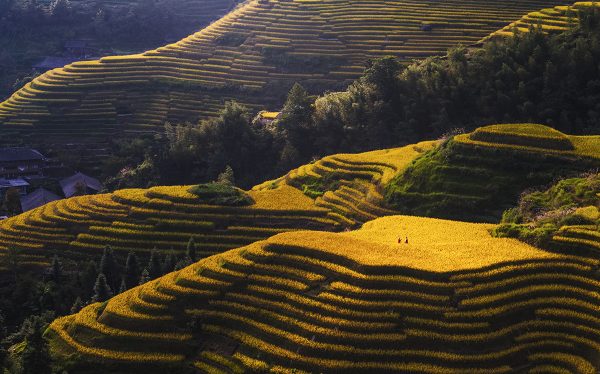
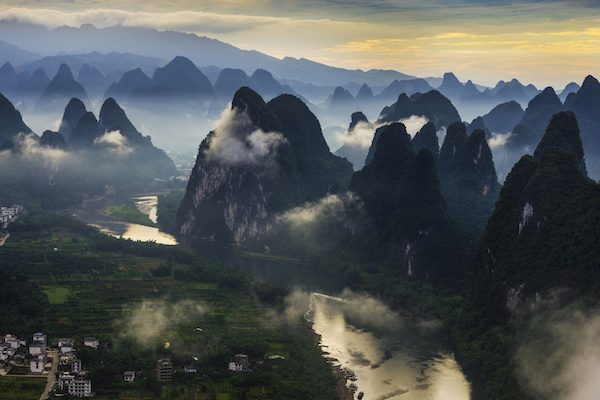
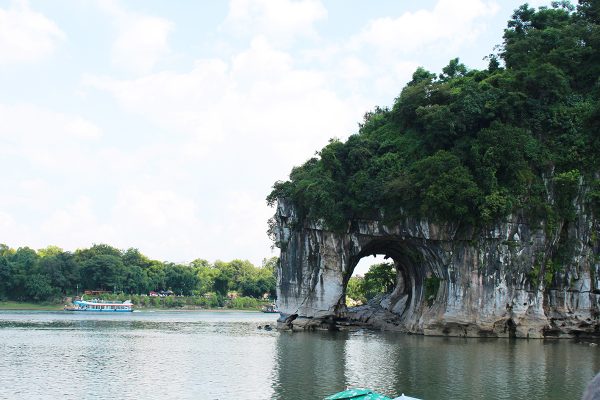 If you visit the city of Guilin, you will undoubtedly come across elephants. Whether they are in a business’ logo, a restaurant’s name, or on the front of a travel brochure, elephants have become a symbol of Guilin, and this is all thanks to Elephant Trunk Hill. Locals in Guilin say that if you have been to Elephant Trunk Hill then you have been to Guilin, which shows just how important this natural wonder is to the city and its people. Elephant Trunk Hill (Xiangbi Hill) is a Karst formation that has naturally formed on the western bank of the Li River just outside of Guilin city. It is so named because it looks like a thirsty elephant dipping its trunk into the river to drink. It rises over 55 metres over the waters of the Li River and measures 108 metres in length and 100 metres in width. In the past, it has been referred to by many names, such as “Li Hill”, “Yi Hill”, and “Chenshui Hill”, but it is now widely known as Elephant Trunk Hill.
If you visit the city of Guilin, you will undoubtedly come across elephants. Whether they are in a business’ logo, a restaurant’s name, or on the front of a travel brochure, elephants have become a symbol of Guilin, and this is all thanks to Elephant Trunk Hill. Locals in Guilin say that if you have been to Elephant Trunk Hill then you have been to Guilin, which shows just how important this natural wonder is to the city and its people. Elephant Trunk Hill (Xiangbi Hill) is a Karst formation that has naturally formed on the western bank of the Li River just outside of Guilin city. It is so named because it looks like a thirsty elephant dipping its trunk into the river to drink. It rises over 55 metres over the waters of the Li River and measures 108 metres in length and 100 metres in width. In the past, it has been referred to by many names, such as “Li Hill”, “Yi Hill”, and “Chenshui Hill”, but it is now widely known as Elephant Trunk Hill.